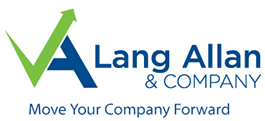IRS Form 941 is a tax form that businesses file quarterly. It is how businesses report income taxes as well as payroll taxes, Social Security, and Medicare taxes that the business withheld from employee paychecks over the previous tax year. Filing deadlines are the last day of January, April, July, and October of any given year.
On the form, you have to account for the following:
- Wages paid by the company
- Tips that employees reported to the company
- Federal income tax the company withheld from employees’ paychecks
- Employer and employee shares of Social Security and Medicare taxes
- Additional Medicare tax that was withheld from employee paychecks
- Current quarter adjustments to Social Security and Medicare taxes for various items, such as fractions of cents, sick pay, tips, and group-term life insurance
- Qualified small-business tax credit for increasing your company’s research activities
Form 941 tells you how much money you should have remitted or will need to remit to the government to cover your payroll tax responsibilities for the quarter. You may be exempt from filing Form 941 if, for example, you’re a seasonal business that hasn’t had to hire anyone, a business that hires only farm workers, or a company that hires only household employees like maids or nannies.
And there’s one more proviso: If you’re almost certain that you’ll pay $4,000 or less in wages in the coming calendar year, you may choose to submit IRS Form 944 instead, which is designed for very small businesses that report and pay withheld income and payroll taxes once per year instead of quarterly. You’ll need to contact the IRS to get permission before you start using Form 944.
Know Your Filing Details
Should the due date when filing Form 941 fall on a weekend or a holiday, file the form by the next business day. If you’re submitting a payment with your return, make that clear. Also, identify which quarter you are filing for. If you’ve paid your employment tax deposits in full and on time for the entire quarter being covered by the return, then you have an additional 10 days to file.
Filing Form 941 through the federal e-File system is the fastest way to do so. You can make employment tax deposits electronically and use the Electronic Federal Tax Payment System, or EFTPS, for income tax payments.
Deposit employment taxes monthly or semiweekly. You can do so easily because the IRS has a pay-as-you-go system. It’s a good idea to not wait to pay until you file Form 941. However, you can make your payment along with Form 941 if your total tax for the current quarter is less than $2,500 or if you’re a monthly depositor who owes a small balance of no more than $100 or 2% of the total tax due. It depends on whichever value is greater. If you’ve paid the complete amount, your balance due, as declared on line 14 of Form 941, will be $0.
Some states will ask you to file a state form like Form 941 when reporting income withholdings and employer taxes at the state level. Filing federal and state forms on time avoids penalties, like a 5% to 10% fee on deposits that are more than 16 days late. You will likely accrue interest as well. Filing Form 941 late can lead to a penalty of 5% per month or per partial month, up to a fee of 25% at the most.
For more compliance details for your particular tax situation, give us a call.
